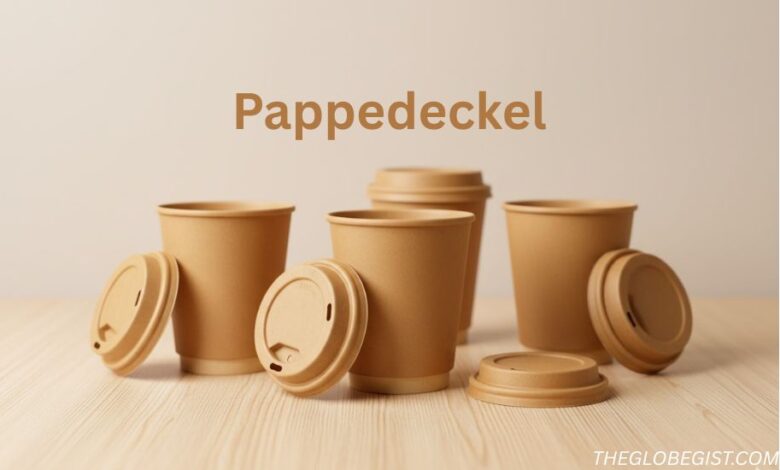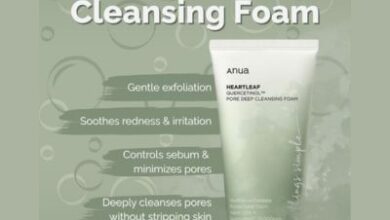Pappedeckel: Why Cardboard Lids Are Replacing Plastic

Pappedeckel is a German word that translates to cardboard lid or cardboard cover in English. It combines “Pappe” (cardboard/paperboard) and “Deckel” (lid/cover). While at first glance it might sound like a small and unimportant object, the pappedeckel has actually become an essential part of modern packaging, sustainability movements, and even creative industries. From food packaging to household crafts, the humble pappedeckel has grown into a symbol of eco-friendly innovation and practical design.
In this article, we will take an in-depth look at what pappedeckel means, its variations, history, applications, environmental benefits, and modern relevance.
What Does Pappedeckel Mean?
The term pappedeckel refers specifically to a cover or lid made from cardboard or paperboard. It is typically used to close containers, boxes, jars, or food packaging. Depending on the thickness, design, and purpose, a pappedeckel may be rigid or flexible.
In English dictionaries and translation platforms, pappedeckel is often defined as pasteboard lid, cardboard lid, or cardboard cover. In German usage, it is common in packaging industries, craft sectors, and household references.
Variants and Spellings of Pappedeckel
The word pappedeckel is also found in slightly different forms, such as:
-
Pappendeckel – a standard alternative spelling
-
Pappdeckel – another variant, particularly in certain regions
All of these forms point to the same idea: a lid made of cardboard. The plural form in German is Pappedeckel (same spelling), and the declension follows standard masculine noun rules in the language.
Historical Background of Pappedeckel
Cardboard has been used since the early 19th century when manufacturers began developing pressed paper products as cheaper, lightweight alternatives to wood or metal packaging. The cardboard lid or pappedeckel emerged as industries required an inexpensive and recyclable way to close containers.
By the 20th century, with the rise of mass production and consumer goods, the pappedeckel became standard in bakeries, dairies, and fast-food outlets. Its low cost and disposability made it ideal for businesses looking to distribute goods in large numbers. Today, it has evolved into a staple in packaging worldwide, with new designs aimed at balancing practicality and environmental responsibility.
Everyday Uses of Pappedeckel
The pappedeckel is more versatile than many realize. Here are some of the most common areas where it is used:
Food Packaging
-
Lids for ice cream tubs, yogurt containers, and takeaway bowls
-
Closures for coffee cups, instant noodle packaging, and bakery boxes
-
Cardboard seals on jam jars or glass bottles
Household Uses
-
DIY lids for storage containers
-
Temporary covers to protect food or household items
-
Coaster-like discs, sometimes used as substitutes for beer mats (Bierdeckel)
Industrial and Commercial Applications
-
Protective closures for bulk shipments
-
Temporary lids in transport packaging
-
Marketing or branding surface for logos and product details
Manufacturing and Materials
A pappedeckel is typically made from paperboard, which is thicker than standard paper but thinner than corrugated cardboard. The material can be:
-
Virgin fiber board (made from fresh pulp)
-
Recycled board (produced from post-consumer recycled paper)
-
Coated board (with a thin layer for moisture resistance or print finish)
Modern manufacturing emphasizes lightweight yet durable lids. Many suppliers add coatings that are biodegradable, making them resistant to oil or moisture while remaining eco-friendly.
Pappedeckel in Sustainable Packaging
One of the most important aspects of the pappedeckel today is its role in eco-friendly packaging. Unlike plastic lids, which can remain in landfills for centuries, cardboard lids decompose naturally and can be recycled multiple times.
Key environmental benefits include:
-
Biodegradability – decomposes within weeks to months
-
Recyclability – can be reused in paper cycles
-
Lower carbon footprint – production uses less energy than plastics
-
Reduced plastic waste – helps companies meet sustainability goals
Because of these advantages, more and more companies are replacing plastic cup lids with cardboard alternatives, giving the pappedeckel a central role in the green packaging movement.
Creative and DIY Uses of Pappedeckel
Beyond packaging, pappedeckel has found a place in creative industries and hobbies. Examples include:
-
Craft projects – cut into shapes for school projects or art designs
-
Decorations – painted lids used in party décor or DIY ornaments
-
Protective surfaces – used in scrapbooking or painting as backing materials
-
Children’s games – as tokens, discs, or building materials for crafts
Its low cost and ease of cutting make it especially popular in educational and artistic activities.
Cultural Notes and Confusions
In German culture, the word pappedeckel is sometimes confused with similar terms:
-
Bierdeckel – beer coaster, also cardboard but flat and round
-
Pappardelle – an Italian pasta variety that looks nothing like a lid but is often confused online due to spelling similarity
Writers and content creators should clarify these differences, especially for readers outside German-speaking countries.
The Role of Pappedeckel in Modern Business
For companies, the pappedeckel represents more than just a lid — it’s an opportunity for branding, customer satisfaction, and eco-responsibility. Businesses print logos, product descriptions, and promotional designs directly on lids. Food outlets often use colorful pappedeckel lids to attract attention and signal eco-friendly values.
Furthermore, global trade has expanded the demand for biodegradable packaging solutions. As governments introduce stricter environmental regulations, pappedeckel is expected to play an even greater role in reducing single-use plastics.
Challenges and Limitations
While the pappedeckel offers many advantages, it is not without drawbacks:
-
Moisture sensitivity – unless coated, cardboard can soften or deform with liquids
-
Durability – weaker than plastic for long-term storage
-
Cost fluctuations – prices may rise due to pulp and paper supply shortages
Despite these limitations, innovation in coating technologies and recycled materials continues to address these concerns.
Future of Pappedeckel in Packaging
Looking ahead, the demand for pappedeckel will likely grow as part of the global sustainability trend. With more companies committing to carbon neutrality and eco-friendly packaging, cardboard lids will see wider adoption in both small businesses and multinational brands.
Researchers are also exploring new bio-coatings that give cardboard lids water-resistant qualities without sacrificing biodegradability. This innovation could make pappedeckel a mainstream alternative to plastic lids worldwide.
Conclusion
The pappedeckel may appear to be a simple object, but it carries significant value in packaging, sustainability, culture, and everyday life. From ice cream lids to craft projects, it is a versatile tool that bridges practicality and eco-consciousness.
As businesses and consumers move toward greener choices, the pappedeckel will continue to stand out as an example of how small innovations can create a big impact. For readers who want to stay informed on such topics, The Globe Gist frequently covers insights into cultural terms, packaging innovations, and sustainability trends.
Q1. What does pappedeckel mean?
Pappedeckel is a German word that literally means cardboard lid or cardboard cover. It is commonly used for disposable or recyclable lids made from paperboard.
Q2. Are there different spellings of pappedeckel?
Yes. You may also see it written as Pappendeckel or Pappdeckel. All versions refer to the same concept of a cardboard lid.
Q3. Where are pappedeckel lids commonly used?
They are used in food packaging (ice cream tubs, coffee cups, takeaway boxes), in households (as covers or coasters), and in crafts or DIY projects.
Q4. Why is pappedeckel considered eco-friendly?
Unlike plastic lids, pappedeckel is biodegradable, recyclable, and usually made from recycled paper fibers. This makes it a more sustainable choice.
Q5. Is pappedeckel the same as bierdeckel?
No. A bierdeckel is a beer coaster, usually flat and round, while a pappedeckel is a lid or cover made from cardboard.
Q6. Can pappedeckel replace all plastic lids?
Not always. While it works well for many food and packaging uses, cardboard lids may not be as durable or moisture-resistant as plastic without special coatings.
Q7. Is pappedeckel related to pappardelle pasta?
No. Pappardelle is an Italian pasta, while pappedeckel is a German term for a cardboard lid. The similarity is only in spelling.
Q8. Who uses pappedeckel the most?
Food businesses, bakeries, coffee shops, and eco-conscious brands often use pappedeckel as part of their packaging to reduce plastic waste.
Q9. Can I buy pappedeckel lids for home use?
Yes. They are available from packaging suppliers, online marketplaces, and sometimes craft stores for DIY purposes.
Q10. What is the future of pappedeckel in packaging?
With the rise of sustainability trends, pappedeckel is expected to grow in popularity as companies shift away from single-use plastics.
Thanks for read our article if you want more like this kind of article visit our site The Globe Gist, and comment us. We provide authentic & comprehensivf information to our readers.



